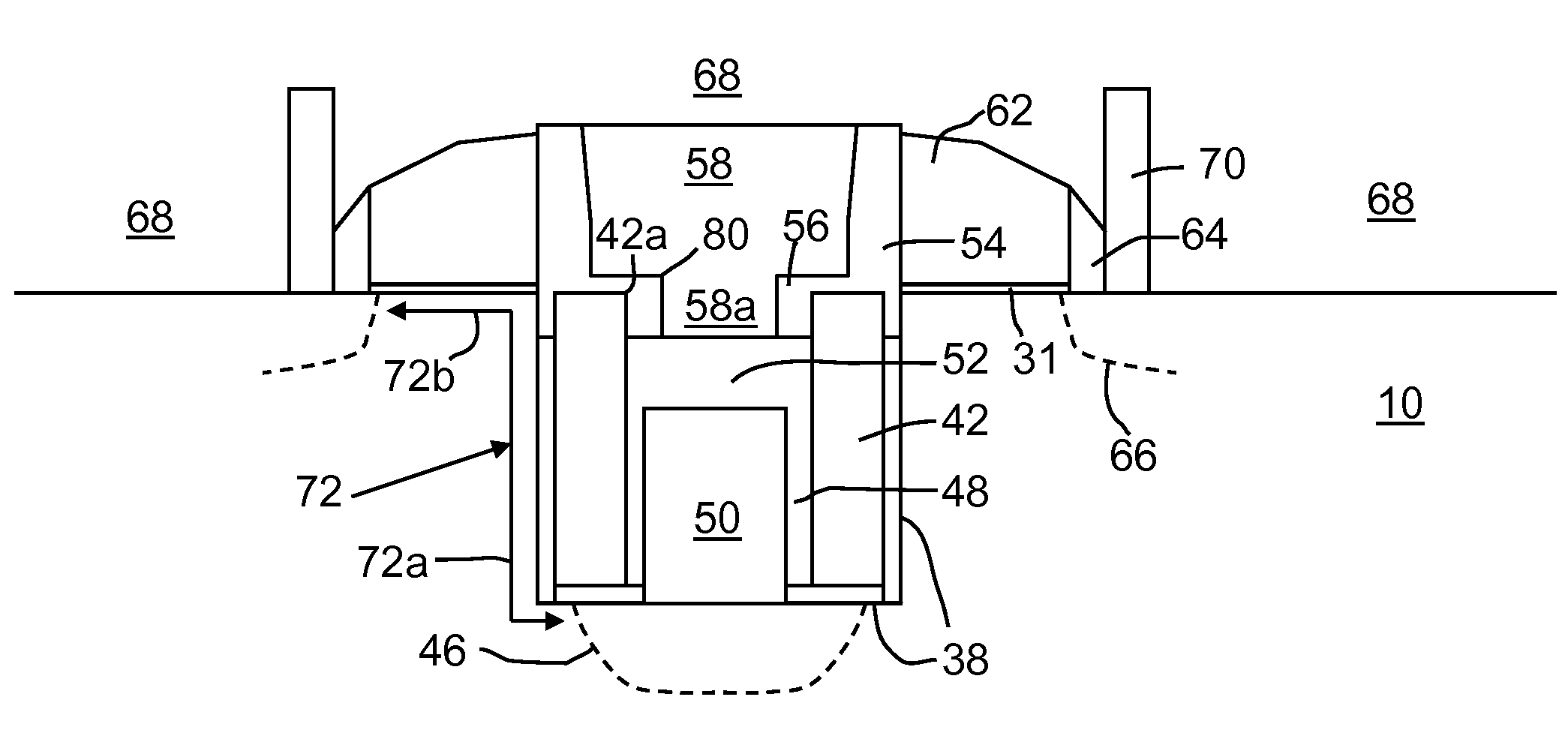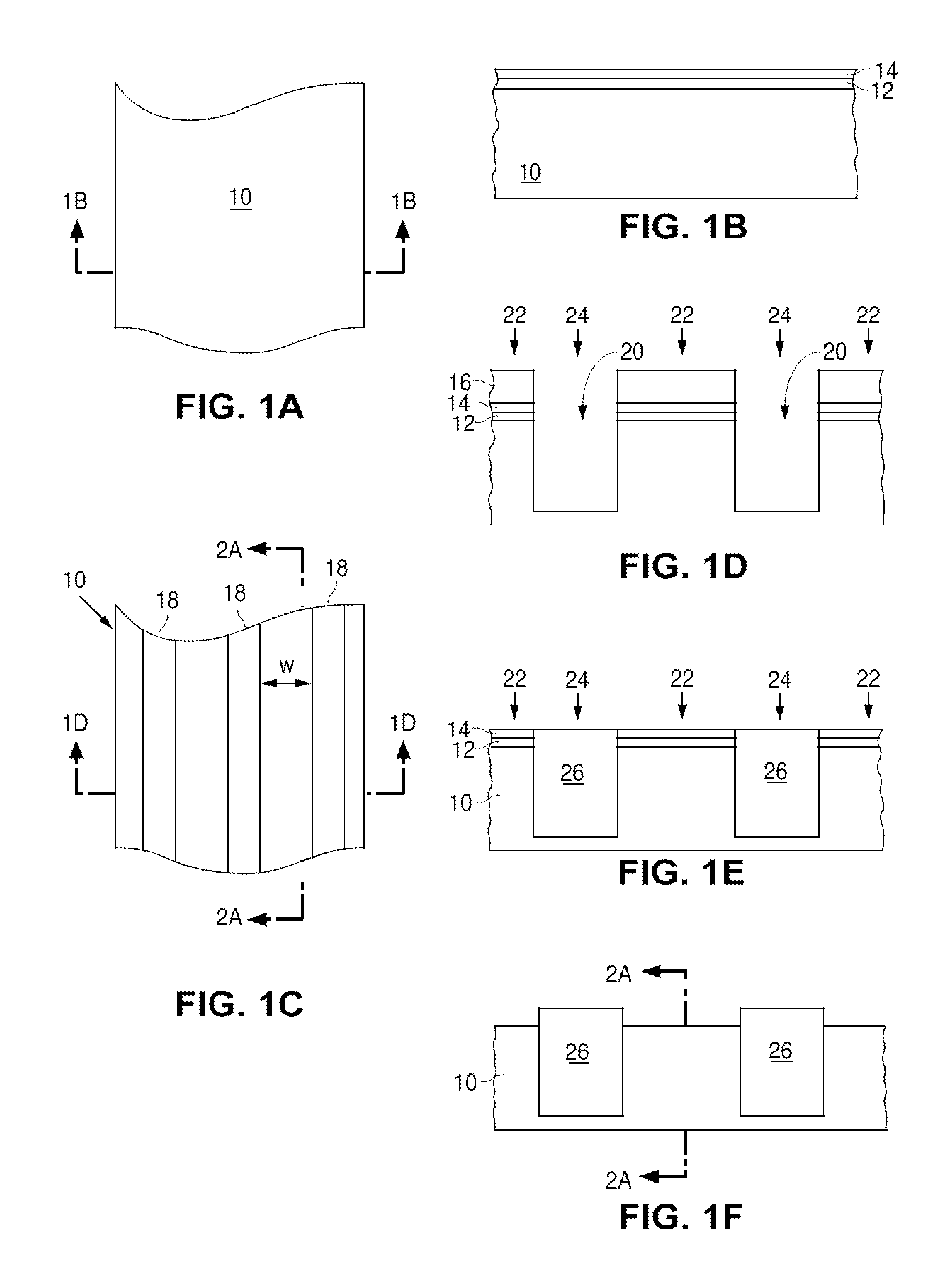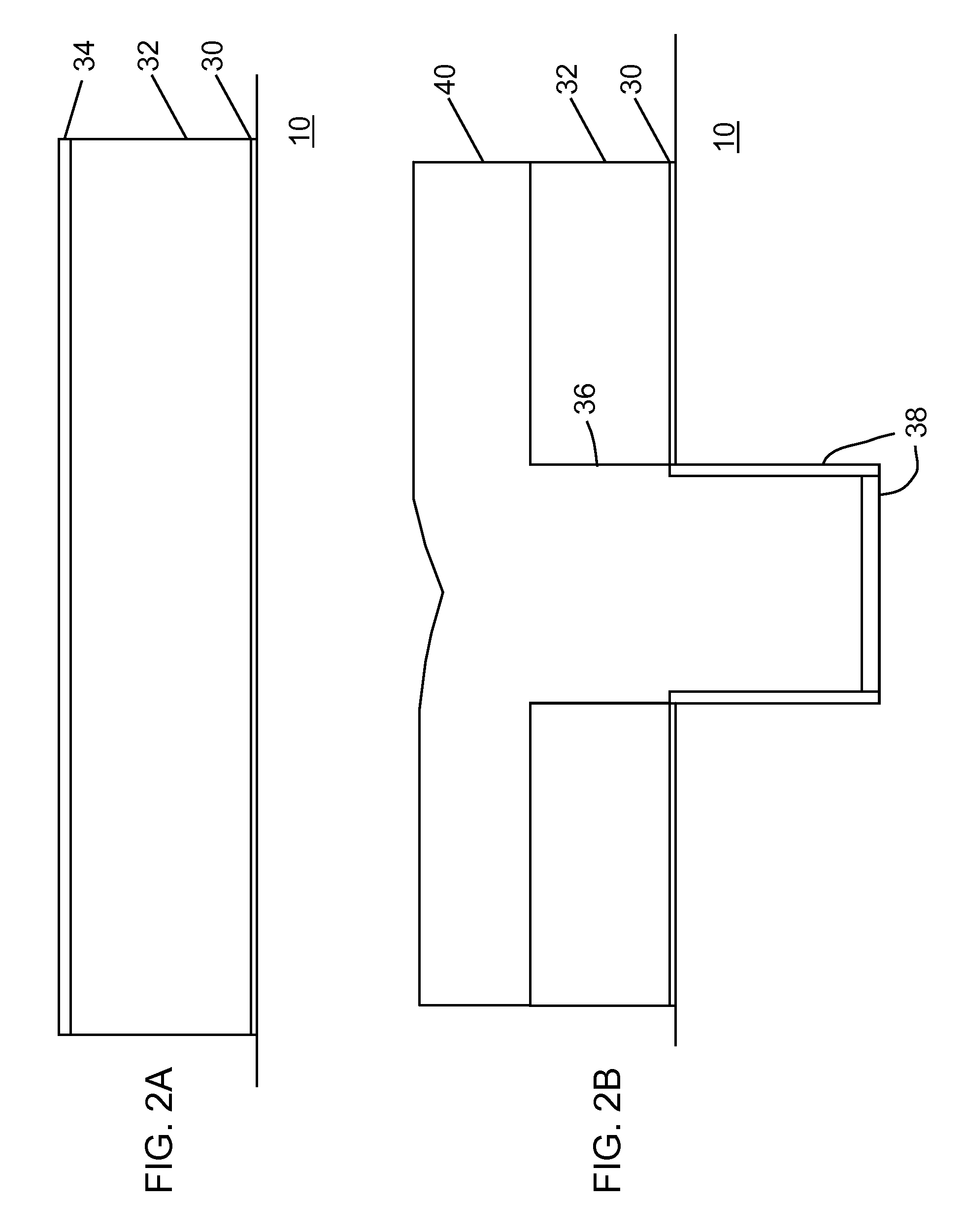Non-volatile memory cell with self aligned floating and erase gates, and method of making same
a technology of floating gate and erase gate, which is applied in the direction of semiconductor devices, electrical devices, transistors, etc., can solve the problems of unfavorable high-voltage operation, difficult to surround the control gate with sufficient insulation, and unwanted capacitive coupling between the control gate and the floating ga
- Summary
- Abstract
- Description
- Claims
- Application Information
AI Technical Summary
Benefits of technology
Problems solved by technology
Method used
Image
Examples
Embodiment Construction
[0022]The method of the present invention is illustrated in FIGS. 1A to 1F and 2A to 2F (which show the processing steps in making the memory cell array of the present invention). The method begins with a semiconductor substrate 10, which is preferably of P type and is well known in the art. The thicknesses of the layers described below will depend upon the design rules and the process technology generation. What is described herein is for the 0.09 um micron process. However, it will be understood by those skilled in the art that the present invention is not limited to any specific process technology generation, nor to any specific value in any of the process parameters described hereinafter.
[0023]Isolation Region Formation
[0024]FIGS. 1A to 1F illustrate the well known STI method of forming isolation regions on a substrate. Referring to FIG. 1A there is shown a top plan view of a semiconductor substrate 10 (or a semiconductor well), which is preferably of P type and is well known in...
PUM
 Login to View More
Login to View More Abstract
Description
Claims
Application Information
 Login to View More
Login to View More - R&D
- Intellectual Property
- Life Sciences
- Materials
- Tech Scout
- Unparalleled Data Quality
- Higher Quality Content
- 60% Fewer Hallucinations
Browse by: Latest US Patents, China's latest patents, Technical Efficacy Thesaurus, Application Domain, Technology Topic, Popular Technical Reports.
© 2025 PatSnap. All rights reserved.Legal|Privacy policy|Modern Slavery Act Transparency Statement|Sitemap|About US| Contact US: help@patsnap.com



